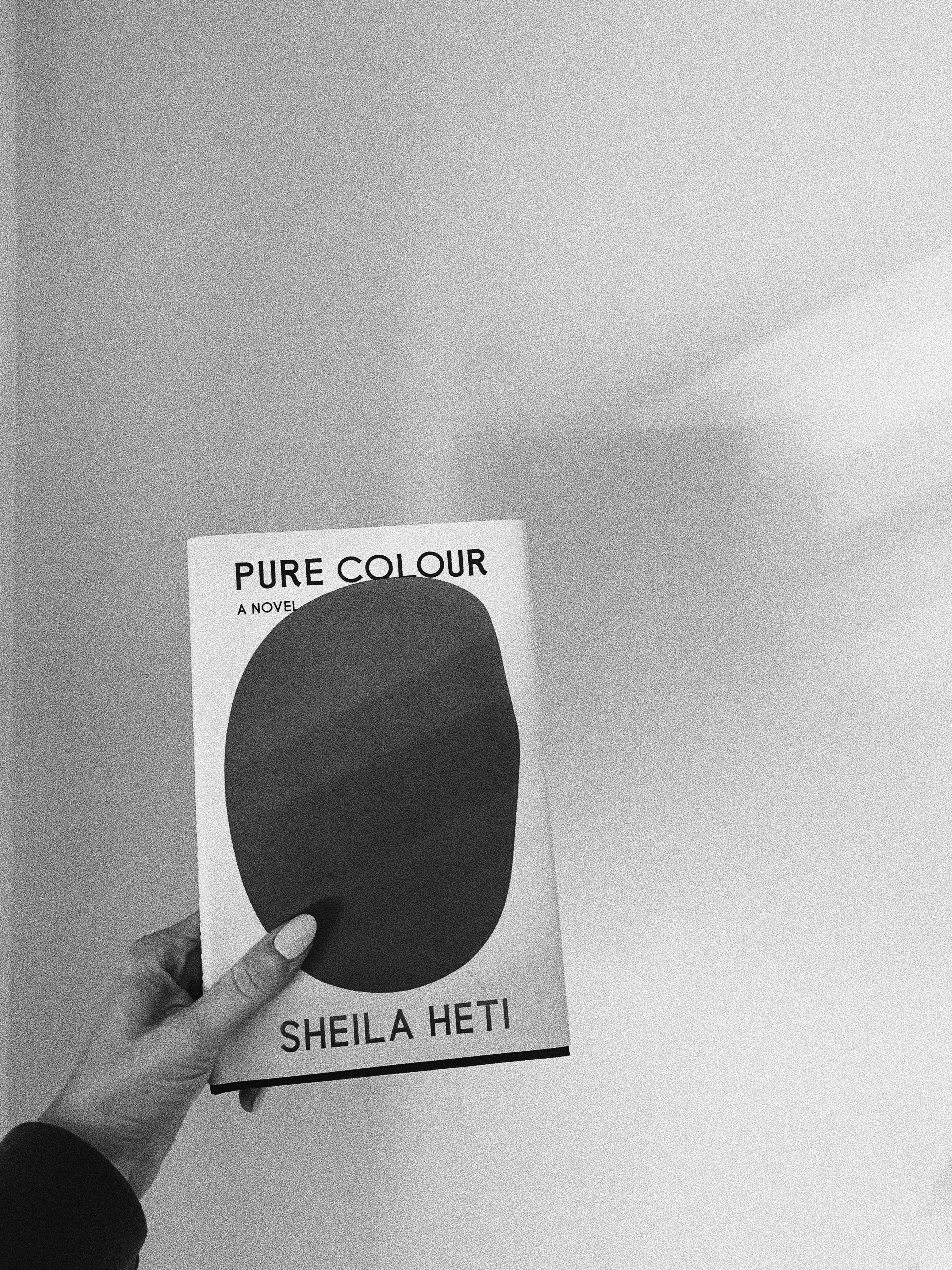Pure Colour
by Sheila Heti

Human creation is split into three categories, according to Sheila Heti in Pure Colour: birds, fish, and bears. Or more conceptually, beauty, structure, and care. The birds concern their lives with the beauty of the world, the fish with its structure, and the bears with its care. This contextual truth is established at the beginning of the novel and loosely anchors the contemplation of its main character throughout.
Mira is a bird. She moves through the world giving it its metaphors, pictures, and stories. She is in school to become an art critic. Her father is a bear and the woman she comes to love is a fish, and she finds herself stumbling and scattered as she navigates the venn diagram of these opposing purpose-driven relationships.
Trying to put together a coherent thought about this book is tricky, because the book itself is not quite coherent. It floats in and out of earthly consciousness in ways similar to A Wrinkle in Time by Madeleine L’Engle or Gingerbread by Helen Oyeyemi. It refuses to explain itself too much at the risk of losing its daydream-like tone.
The cause for this tone seems to be the wake of loss and the ability of grief to temporarily upend the way you think. Mira loses her father a third of the way into the novel. She is left to contemplate, as the bereaved always are, the limits of someone’s spirit after they have departed this world. The story takes a strange turn when Mira finds herself stuck inside the leaf of a tree with the spirit of her dead father to keep her company.
Inside this leaf, Mira communicates with her father through, in earthly terms, what I would call telekinesis, though their physical brains don’t seem to be present — neither says a word yet both receive everything the other one has to say. They discuss everything they never said to each other, crossing the bridges that connect a bird to a bear. Sentences run into each other as both Mira and her father debate each other’s earthly disposition. They philosophize what plants have learned over billions of years as they sit in audience of creation, if birds have art on the walls of their nests that is better than the art we hang in our human museums, how this existence is only the first draft of the earth and there will be many other drafts to come, and why the loving part of us is the best, least individual thing about us.
Pure Colour is a truly existential book. The structure of thinking and processing that Mira goes through feels like a reciprocal of what we have been taught about thinking and processing: the world — creation, physicality — is our genesis, and our purpose and thinking can only be born through its spirit. Our awareness of creation is not a result of our purpose, it is the marker. Beauty, structure, and care are spirit given to form. “Art is not made for living bodies — it is made for the cold, eternal soul.”
These separate prisms by which we see the world enforce muddy boundaries between us that turn our eyes to creation for answers when we are unable to cross the divide. A leaf, alive by definition but lacking the autonomy of a human being, is the catalyst by which Mira can process her grief by reuniting with her father. It is an elemental unit of the universe that hosts her in her sorrow. It cannot create beauty, structure, or care, yet is beauty, structure, and care. And so, we are the same for others because we are part of creation.
It is a never-ending cycle, this life, whereof every piece of the universe is alternating between being and creating. As I read Pure Colour, I didn’t want it to end because somehow, it, too, was the embodiment of being and creating; a novel that’s not a novel. A story that is a question. A creation that is so all-encompassing that it crosses the threshold into a being, which is to say, the purpose of our cold, eternal souls.

